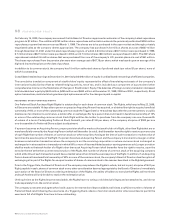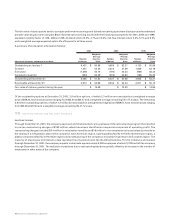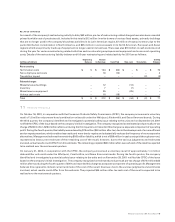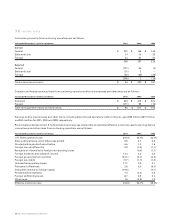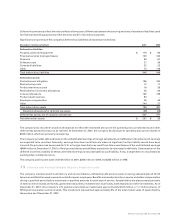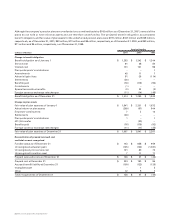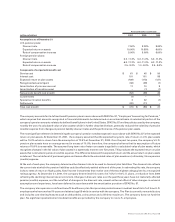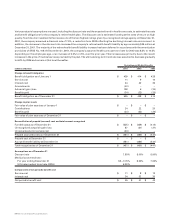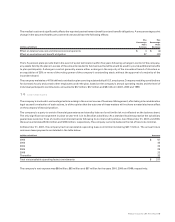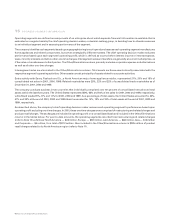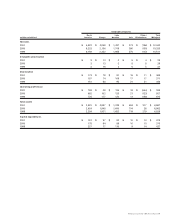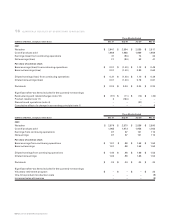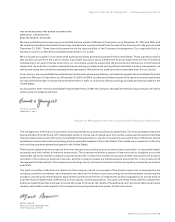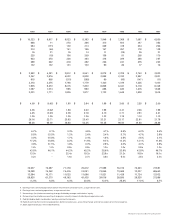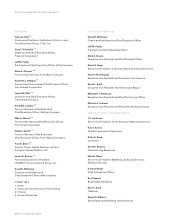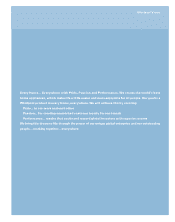Whirlpool 2001 Annual Report Download - page 58
Download and view the complete annual report
Please find page 58 of the 2001 Whirlpool annual report below. You can navigate through the pages in the report by either clicking on the pages listed below, or by using the keyword search tool below to find specific information within the annual report.
Notes to Consolidated Financial Statements56
15 BUSINESS SEGMENT INFORMATION
Operating segments are defined as components of an enterprise about which separate financial information is available that is
evaluated on a regular basis by the chief operating decision maker, or decision making group, in deciding how to allocate resources
to an individual segment and in assessing performance of the segment.
The company identifies such segments based upon geographical regions of operations because each operating segment manufactures
home appliances and related components, but serves strategically different markets. The chief operating decision maker evaluates
performance based upon each segment’s operating profit, which is defined as income before interest income or interest expense,
taxes, minority interests and before other one-time charges. Intersegment sales and transfers are generally at current market prices, as
if the sales or transfers were to third parties. The Other/Eliminations column primarily includes corporate expenses and eliminations
as well as all other one-time charges.
Intersegment sales are eliminated in the Other/Eliminations column. Total assets are those assets directly associated with the
respective segment’s operating activities. Other assets consist principally of assets related to corporate activities.
Sales activity with Sears, Roebuck and Co., a North American major home appliance retailer, represented 21%, 20% and 18% of
consolidated net sales in 2001, 2000, 1999. Related receivables were 25%, 22% and 22% of consolidated trade receivables as of
December 31, 2001, 2000 and 1999.
The company conducts business in two countries that individually comprised over ten percent of consolidated net sales and total
assets within the last three years. The United States represented 59%, 55% and 54% of net sales for 2001, 2000 and 1999, respectively,
while Brazil totalled 9%, 11% and 11% for 2001, 2000 and 1999. As a percentage of total assets, the United States accounted for 44%,
41% and 39% at the end of 2001, 2000 and 1999. Brazil accounted for 14%, 18% and 19% of total assets at the end of 2001, 2000 and
1999, respectively.
As described above, the company’s chief operating decision maker reviews each operating segment’s performance based upon
operating profit excluding one-time charges. In 2001, these one-time charges were comprised of restructuring and related charges and
product recall charges. These charges are included in operating profit on a consolidated basis and included in the Other/Eliminations
column in the tables below. For year-to-date amounts, the operating segments recorded total restructuring and related charges
(refer to Note 10) as follows: North America — $35 million, Europe — $92 million, Latin America — $68 million, Asia — $13million
and Corporate — $4 million, for a total of $212 million. Also included in the Other/Eliminations column is $295 million of product
recall charges related to its North American region (refer to Note 11).


